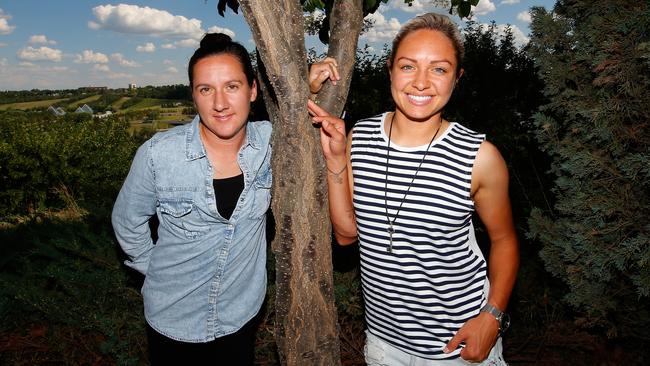The glaring pay imbalance in sport: Why it pays to be a man
WHEN men make more in a day than their female counterparts make in a year, we’ve got a problem.

AUSSIES love their sport but when it comes to making a living from it, it sure pays to be a man.
Just weeks away from the start of the A-League season, finder.com.au has done the figures and discovered that despite enjoying a fantastic year, Australia’s women’s soccer team, the Matildas, earns a staggering $23,000 less per goal than the Socceroos.
The pay gap is even more astounding when you consider while Socceroos captain Tim Cahill banks approximately $27,397 a day — not including international bonuses or endorsement deals — The Matildas’ co-captain, Lisa De Vanna, will make the same amount in one year. That’s right: De Vanna takes an entire year to earn as much as Cahill makes in a day. It hardly seems fair.
Interestingly, tennis remains the only sport where men and women are paid equal prize money, while Australian basketball and hockey teams are the only team sports that pay the same daily rate irrespective of gender.
And it’s not just the pay packets of Australian sportsmen and women that differ so greatly. When it comes to media coverage of sport, male sport receives a whopping 81 per cent of TV sports news coverage compared to women’s sport at just 8.7 per cent of the coverage, according to a recent report by the Australian Sports Commission (ASC).
Similarly, women feature in just 7 per cent of sports programming in Australia.
What makes this even worse, is coverage has declined in recent years instead of increasing. Women’s sport made up about 11 per cent of television sport programming a decade ago.
It’s not just Australia where this trend is evident. In Canada, a study last year by the Women’s Sport and Fitness Foundation found 93 per cent of sports broadcast media airtime was devoted to men’s sports.
To justify the great disparity in pay and media coverage of women’s sports, sporting bodies and media outlets argue women’s sport simply doesn’t generate as much revenue as male sport. Because women’s fan base is smaller, they argue, women’s sport therefore receives a much smaller slice of the sponsorship dollar.
It’s certainly not for lack of talent. At the London Olympics in 2012, 22 of Australia’s 35 Olympic medals were won by women. No prizes for guessing where the majority of sponsor dollars went.

After decades of male sport domination, it’s no wonder women’s sport is starting off at a lower fan base. But while the popularity of women athletes is growing, the media coverage and sponsorship dollars aren’t following through.
Why is this the case in 2015 and what does this mean for future generations? As a mother who is expecting a little girl later this year, this worries me: will my daughter be subjected to this sexism if she chooses to play sport professionally?
Some observers, including Australian sports presenter Stephanie Brantz, have called on media outlets to devote more airtime to women athletes and sporting teams. If that happens, the sponsors should follow.
Of course, it’s not just sport where women have been battling pay disparities. According to the Australian Government’s Workplace Gender Equality Agency, women working fulltime earn 17.9 per cent less than men. The gender pay gap has hovered between 15 per cent and 19 per cent for the past two decades, so it doesn’t look like this is likely to change any time soon.
The way towards gender pay equality in sport and every occupational category at large, is for women and men to keep the issue on the national agenda. The more we talk about it, the more likely we are to take steps to correct it.
For the sake of my unborn daughter, I hope it happens before she enters the workforce.
Michelle Hutchison is the Money Expert at finder.com.au, and the newly launched finder.com in the US.



